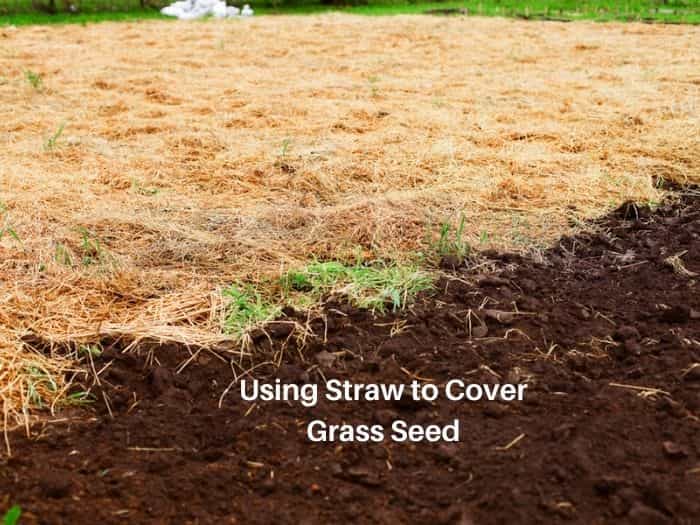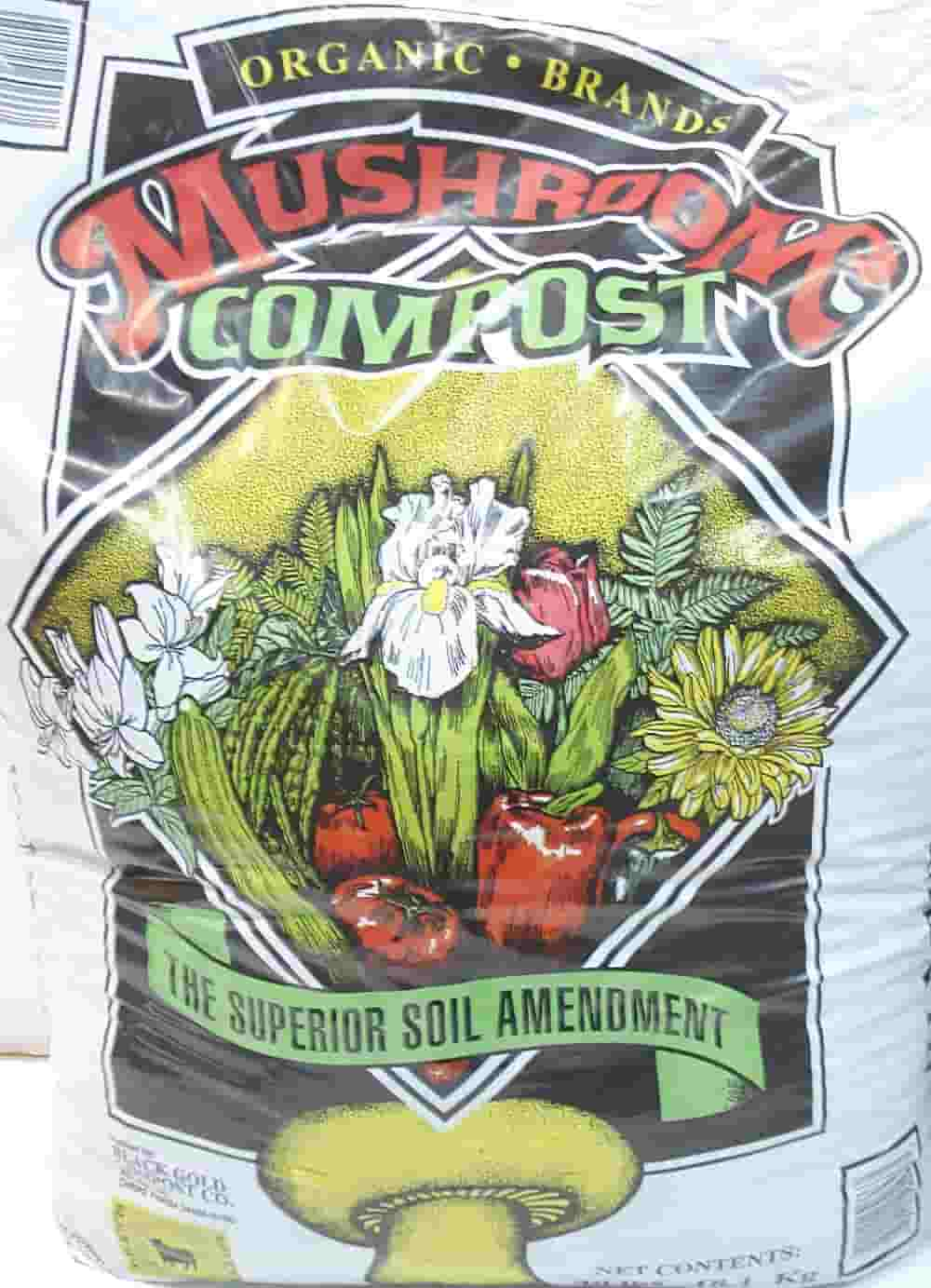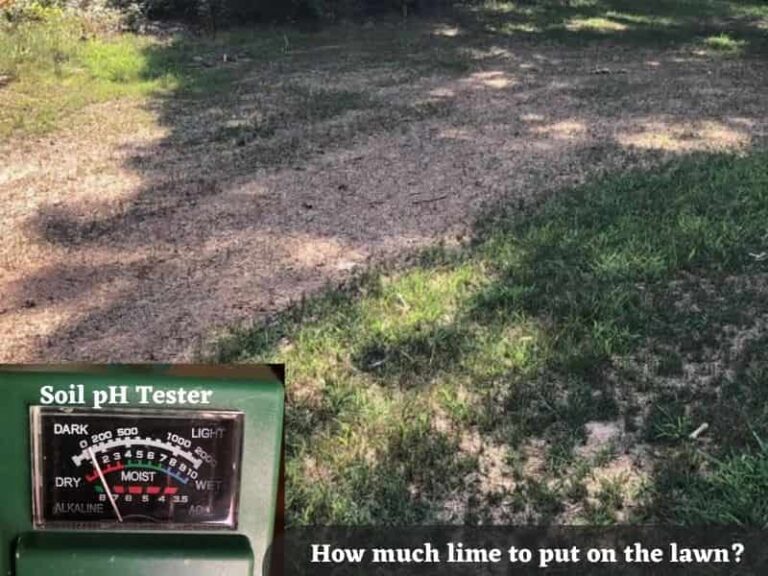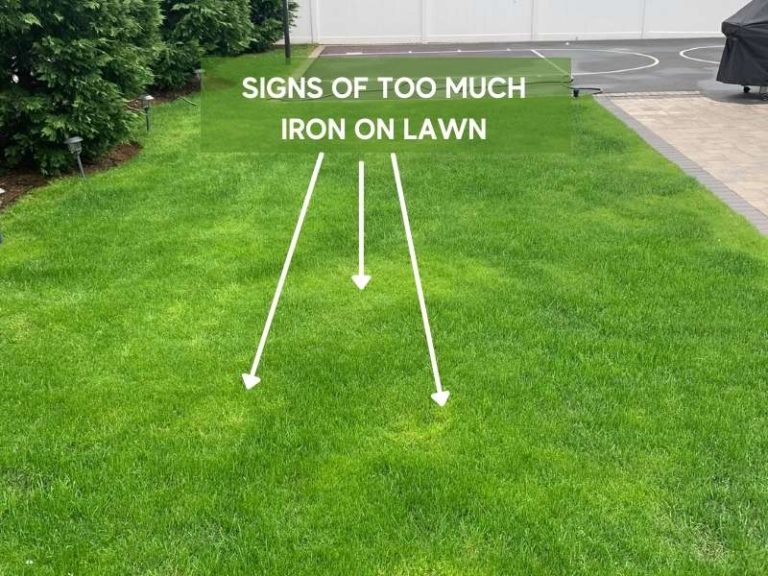Using Straw to Cover Grass Seed: How Much, Alternatives + Benefits
When seeding a new lawn, you’ll improve the germination rate by covering up the seeded area with a thin layer (not more than 1/4 inch) of mulch. It improves the rate of germination. So, can you use straw to cover grass seed?
It’s not a must you cover grass seed with straw if you have prepared the soil properly for planting. However, you may need to use straw as mulch to help retain soil moisture and heat for better germination and also prevent seeds from being washed away.
There’s a lot that can happen to grass seed as soon as you spread it. Birds can start picking the seeds up, a strong wind can blow them away, or water can wash them away. To improve grass seed germination rate, cover the seeded area with a thin layer of straw to protect the seeds. But is it always necessary?
Do you need to put straw over grass seed?

Covering a newly-seeded lawn with straw mulching enhances the rate of grass seed germination by facilitating soil moisture and heat retention. Newly-planted grass seed typically needs moisture, heat, and seed-to-soil contact that will encourage germination. Straw over grass seeds also helps keep the seeds in place until germination occurs.
Germination includes establishing the root system, which anchors the growing seedlings and prevents them from being exposed to the elements.
READ MORE: When to Start Walking on Newly Planted Grass
Benefits of covering grass seed with straw
While not entirely necessary, straw can improve the germination rate of your grass. Here are the benefits of using straw to cover grass seed:
- Straw prevents grass seeds from being washed away by water.
- Covers grass seed from excess sunlight.
- Straw prevents birds from feeding on grass seed.
- Straw adds organic matter and nutrients to the soil when it decomposes.
Prior to germination, however, newly-planted grass seeds are highly vulnerable to being blown away or washed away by wind and rainwater. This leaves you with patchy turf that has unsightly bare spots in the sections where the seeds were blown away.
Another reason to cover your newly-seeded lawn with straw mulching is to prevent the grass seeds from damage due to excessive exposure to sunlight. Straw also acts as a visual screen to discourage birds and other small animals from digging holes and feeding on the newly-planted grass seeds.
Finally, as the straw decomposes over time, it adds nutrients into the soil, which is beneficial for the growth of the newly-planted grass seeds.
How much straw should you use?
Unlike newly-planted trees and shrubs that are typically covered with a thick layer of mulching, grass seed doesn’t require as much covering. Applying an excessively thick layer of straw over your newly-seeded lawn will inhibit seed growth by preventing much-needed sunlight from reaching the soil.
A thick layer of straw – with its excessive moisture retention properties – makes for a perfect habitat for the growth of fungal organisms like mushrooms. These fungi further choke out your growing grass seeds, thus inhibiting seedling development.
For improved grass seed germination, ensure that the layer of straw that you apply over your newly-seeded lawn is no more than three inches thick. Usually, a single bale of straw should be enough to cover about 1000 square feet of lawn area lightly. Applying more straw than this will encourage fungal infestation, while applying less will likely lead to bare spots on the lawn.
The rule of thumb is this: if you can’t see the soil through your straw covering, you’ve probably applied too much and should cut back on some of it.
Straw Alternatives for Covering Grass seed
Straw makes for a great mulching material for grass seeds since it lacks its own seeds that would otherwise compete for soil nutrients with the grass seeds. However, other mulching materials are equally effective at covering germinating grass seeds.
Here are some straw alternatives to use:
1. Pine straw
Just like straw, pine straw mulch also facilitates moisture and heat retention while still allowing enough sunlight to reach and warm the soil on which the grass seed is growing. However, unlike straw which can be used anytime post-harvest, you’ll want to avoid covering your newly-seeded lawn with fresh pine straw.
The terpene-laden needles of fresh pine straw tend to inhibit seedling growth. Instead, I recommend using aged pine straw where the needles are brown, and the terpene chemicals have evaporated away. You can tell that your pine straw is well-aged and ready for use as grass-seed mulching if the needles lack their characteristic aroma.
2. Sawdust mulch
Sawdust is also another great alternative to straw for covering grass seed. However, you should ensure to apply it very lightly to avoid triggering a matting effect that will discourage seed germination and seedling growth.
Since sawdust is much finer than straw, the particles can form a barrier that will affect evaporation. As a result, you may end up with excessive water in the soil due to slow evaporation, leading to damage of the young roots of your grass seedlings.
Typically, sawdust mulch should be no more than a quarter of an inch thick. Also, when applying sawdust mulch, ensure the fine particles don’t clamp on the grass seeds.
Finally, remember that sawdust mulch tends to leech nitrogen from the soil and should- therefore- be paired with a regular fertilizer application schedule.
3. Peat moss mulch
While peat moss mulch is more commonly used to enrich poor-quality soil, it’s also effective as a mulching material. What’s more, being an organic mulching material, it further enriches the soil with nutrients once it decomposes.
However, for peat moss to effectively facilitate grass seed germination, you have to apply it correctly. This includes ensuring that it’s sufficiently hand-loosened before applying it over your newly-seeded lawn.
Applying peat moss as it is in its thick, fibrous state will leave your growing grass seed starved of moisture, as the ‘blocky’ peat moss covering will soak up most of the water that you apply on the new turf. On the other hand- loosened peat moss easily allows moisture to seep through its airy structure into the soil beneath.
4. Compost
Regular compost and mushroom compost are some of the best straw alternatives for covering grass seeds.
Applying a quarter-inch layer of compost over your newly-seeded grass lawn will help keep the lawn moist while simultaneously feeding the soil with the nutrients necessary for grass seed germination.
However, it’s advisable only to use well-aged compost, as introducing non-decomposed organic matter into the lawn may attract birds that feed on the newly-planted grass seeds.
| Regular compost | Mushroom compost |
|---|---|
 |
 |
See Also: Disadvantages of Mulching Grass
How long to leave straw on grass seed?
Leave the straw mulching in place until the new grass seedlings have grown to a height of about 3 inches. This is usually anywhere between three-five weeks post-planting, depending on various factors such as weather conditions. At this stage, the grass seedlings will have developed strong enough root systems to draw water from the deeper layers of the soil- and thus won’t require as much moisture retention from straw covering.
References
- PETER LANDSCHOOT, PH.D., Professor of Turfgrass Science, Pennstate Extension: Lawn Establishment
- Cornell University: Organic Weed Management




How do you remove the straw when its 3 to 5 weeks later without messing up the grass?
By the time the new grass reaches 4 inches in height you can mow it but try not to mow it shorter than three inches. The mowing will stir up and remove a lot of the straw. Areas heavily covered with straw can be gently raked. When mowing you shouldn’t remove more than 1/3 the height of the grass.